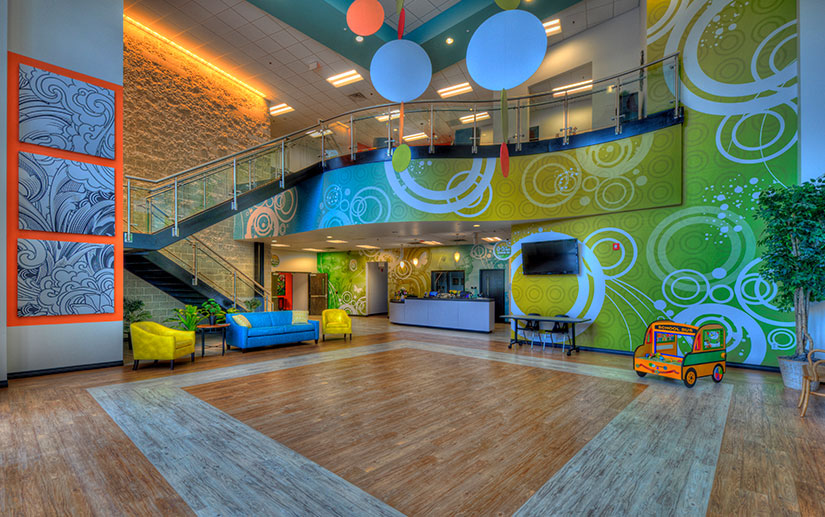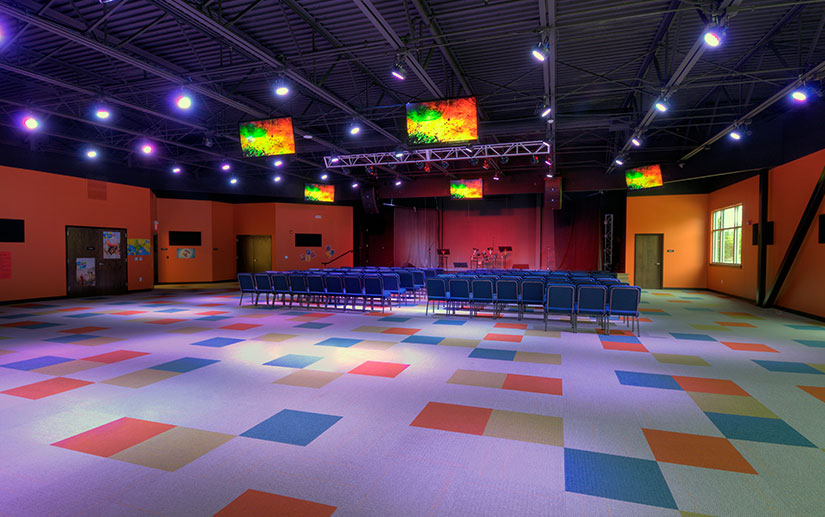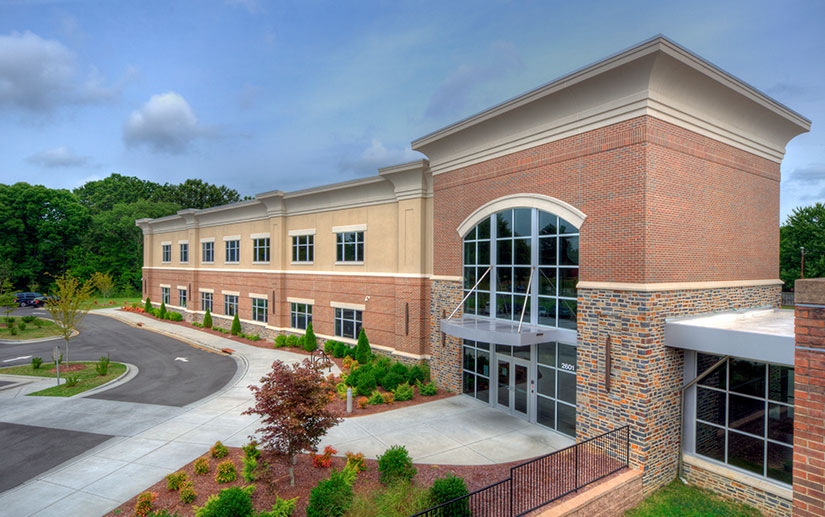Many of today’s churches are no longer a single worship space with rows of pews. Traditional religious facilities are transforming into modern community hubs with a variety of multi-use areas. Churches are looking to keep young people and families engaged throughout the week, not just on Sundays, by creating a family life center with ministry space and activities for diverse groups.
Building a church facility comes with a long list of factors to consider. As your church embarks on expansion or new construction, be sure to investigate the many exciting trends happening in church design. Whether your established congregation has outgrown its current space, or your young church has reached a point where you’re ready to build, these top trends will help you create an inviting environment for worship and fellowship.

#1 Multi-purpose areas for frequent use
There is much more to the modern church than just the sanctuary building. Church members have a strong desire for good stewardship of their facilities, striving to utilize the space multiple times a week rather than once or twice. Multi-purpose areas enable churches to serve their community better — providing an area for family life functions, recreation, outreach and general meetings.
“Churches are looking to meet the needs of individual groups inside the congregation,” says Brian Van Horn, Project Developer at Bobbitt. “By addressing the needs of the community, churches can ensure that everyone has a place to achieve their ministry objectives.” Multi-purpose areas are usually casual, non-structured meeting spaces for people to connect and grow spiritually, personally and even professionally.
#2 Growing emphasis on educational facilities
Many religious facilities are placing a strong focus on creating specified educational facilities. “Churches are trending towards separating children’s worship spaces from the adults, so youth of various ages have their own sense of belonging,” Brian Griffith, Principal Architect at Bobbitt. “Teen and student ministries require special areas to foster the next generation of discipleship.”
Regardless of the lifecycle of the church, the educational component is a significant aspect of what modern churches want. It is common for a young, growing church to ask its builder for an expansive Sunday school facility and buildings for advanced educational programs. Churches are looking to keep young people engaged and integrate faith into their lives more so than in the past.

#3 Maintaining a sense of intimacy for growing congregations
Modern sanctuaries are another construction trend seen in churches across the nation. Even with larger sanctuary sizes, churches are striving to heighten the feeling of intimacy in the worship space. Church members want to feel a closeness to the speaker, which becomes a design challenge for a growing congregation. Churches are adapting to fill that need by building flexible sanctuaries built to accommodate a variety of events.
Seating style is moving toward flexible seating with chairs that can be moved, rather than fixed pews, so the space can change for specific needs. “Seating is arranged in a fan shape so members can be closer to the stage. Instead of the traditional two isles, seating is placed in a half-circle around the stage, allowing the speaker to be more dynamic and come out into the audience,” says Van Horn.
New audio-visual technologies give the speaker the flexibility to roam around and engage with individuals instead of presenting to the audience from a distance. Recently, modern church design is moving away from slanted sanctuary floors in favor of level flooring suitable for a wide range of functions.
#4 Integration of new technologies
Churches are utilizing new technologies, creating the need for space to house and easily access equipment. In modern-day church design, AV rooms are often larger and more complex. Today many traditional churches are using better lighting and understand the importance of incorporating sound.
“With many churches now broadcasting their worship services on the internet and TV and church performances and music becoming more prominent, facilities must be built to accommodate,” says Griffith. “We often design and build green rooms for guest presenters as well as production areas for special recordings and satellite feeds. It’s all a part of supporting outreach to different demographics.”
New lighting effects are also becoming popular with significant advances in the control of the stage and surrounding lighting. Churches are using colored lights to create different environments and moods for the seating area and stage or platform. They are also using motion lights, fogging and all types of special effects. Sanctuary design is moving toward a concert environment versus the traditional church experience.
Find a church builder in the Carolinas
Bobbitt has a strong reputation as a church builder, and we take pride in understanding the needs of religious communities.
“One thing we’ve always done and continue to do for our church clients are early evaluations of sites,” said Van Horn. “This helps the church leadership select the best site based on local building regulations, construction feasibility and budgetary aspects.”
This is just one example of how the Bobbitt method of church construction offers early, accurate cost information and better value. At Bobbitt, our church architects and church builders work under one roof with a unified goal — to build the modern church you need to advance your mission and spread the gospel.
Contact Brian Van Horn today to talk more about design and construction trends for modern religious facilities.


